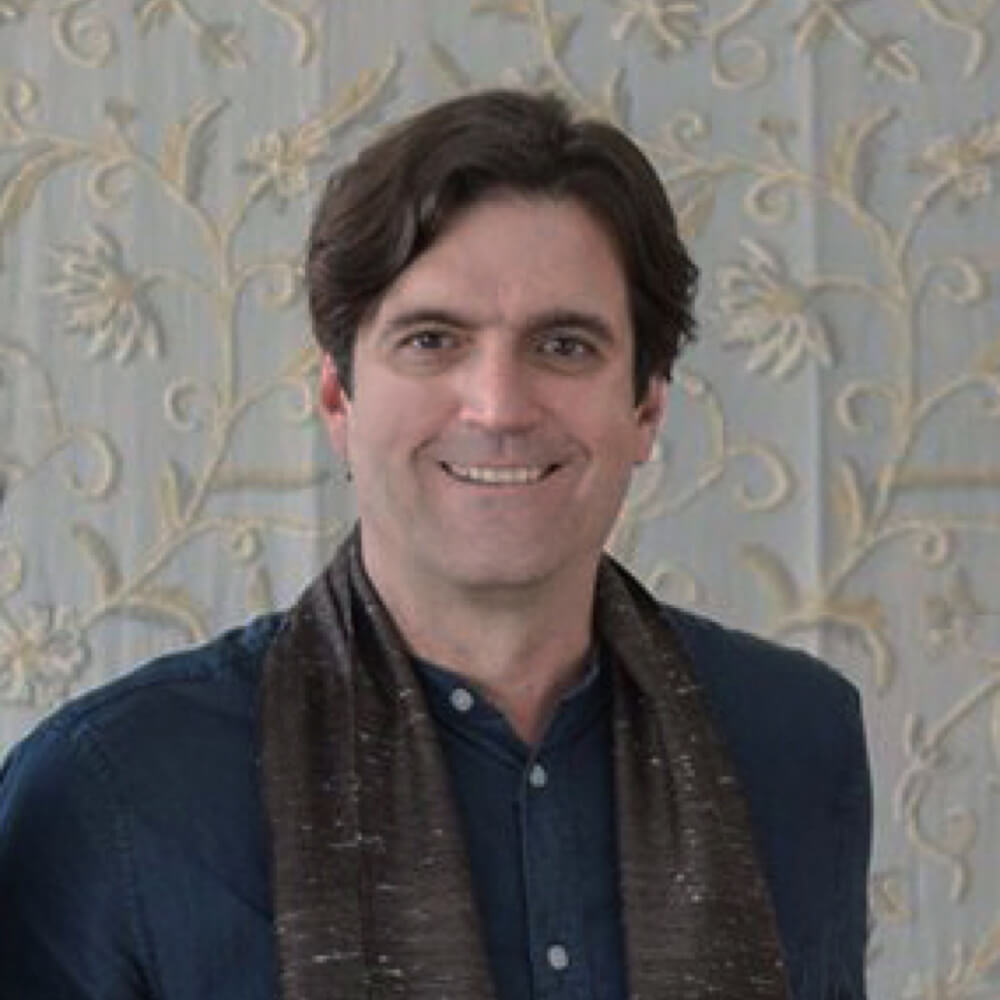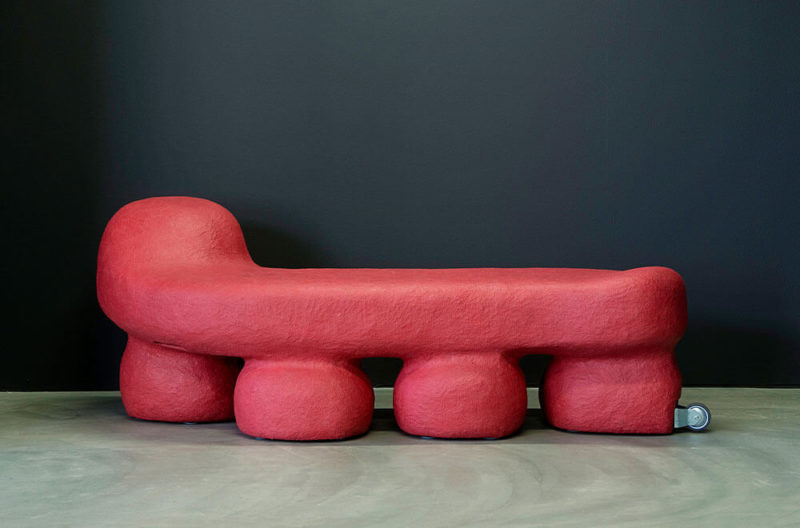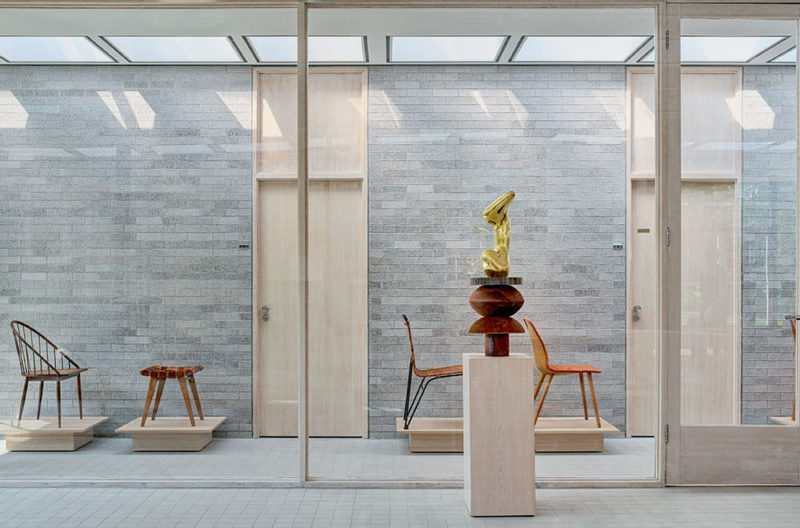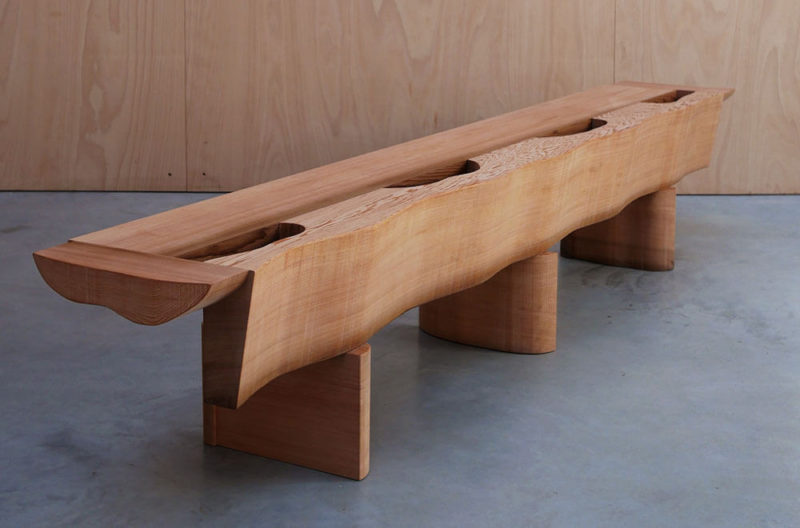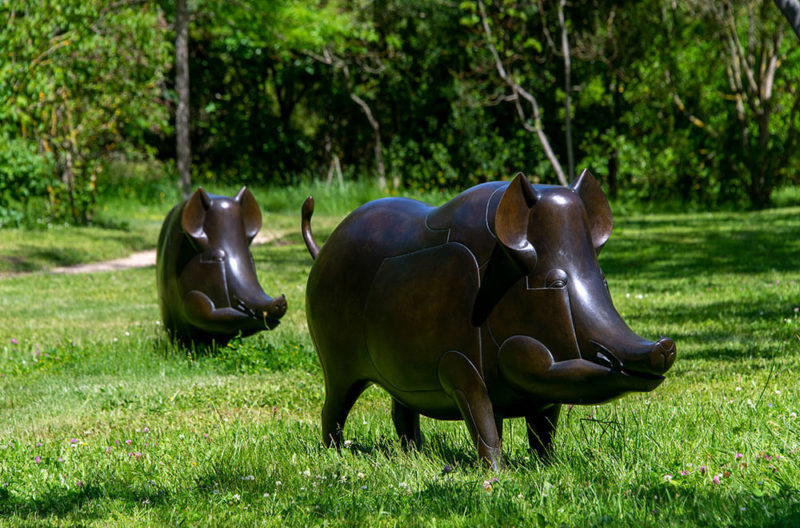Anna Horváth
A rigorous design background, driven by a social conscience, inspired by a Mediterranean island, proves a powerful concoction.
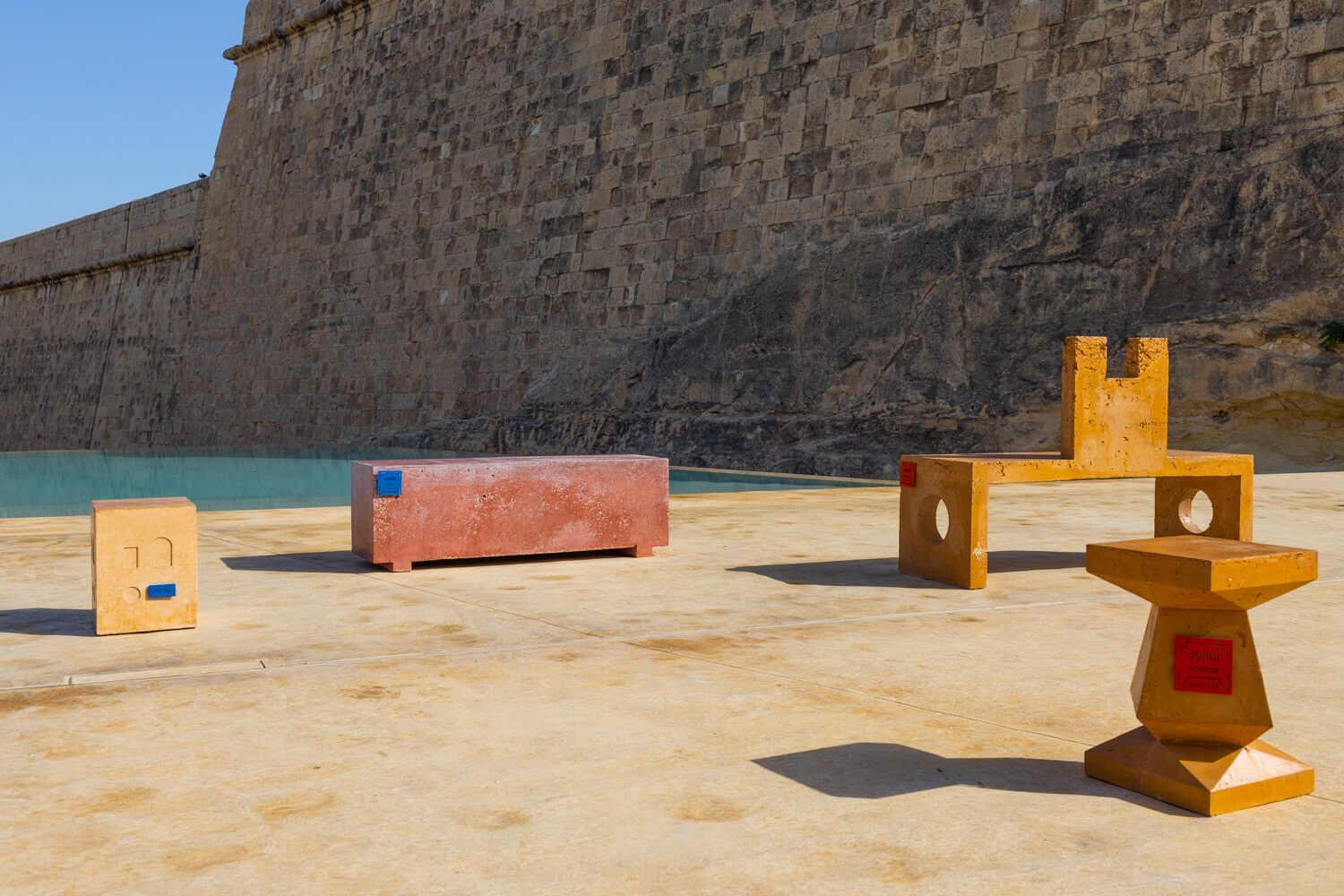
Anna Horvath, ‘SORĠI’ collection launch, 2021
COURTESY: Anna Horvath / PHOTOGRAPH: Therese Debono
MALTA SEEMS AN unlikely place to settle for someone starting a design career, but it was love at first sight for Hungarian-born designer Anna Horváth. She won a trip to the small Mediterranean island in a design competition ten years ago and “I never took that return flight back,” she recounts. The country has offered her inspiration on many levels and influenced her work both visually and politically. 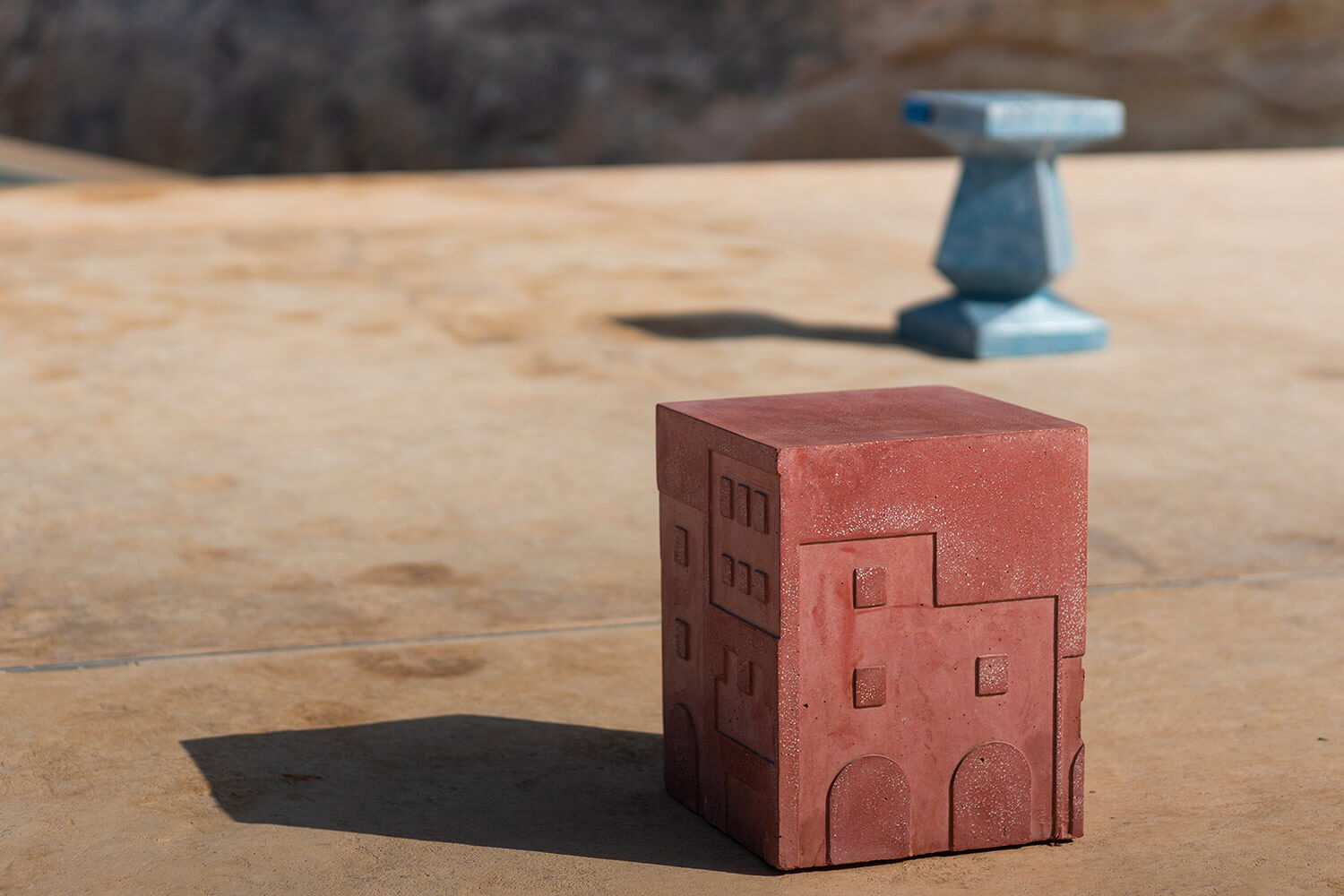
Anna Horvath, ‘SORĠI’ collection launch, 2021
COURTESY: Anna Horvath / PHOTOGRAPH: Therese Debono
Her latest designs, the ‘SORGI’ collection, launched just a few weeks ago, are a response to the changing building environment in Malta, where unregulated construction is rapidly changing the cityscape. Horváth conceived six outdoor benches that pay homage to – and directly use – the architectural history of the capital city, Valletta, and surrounding areas. The benches are built using materials collected from the city’s construction waste and each bench design is inspired by an old building being demolished to make way for new developments. With an astute eye, Horváth distilled the essence of these buildings and incorporated them into her own vocabulary of simple forms.
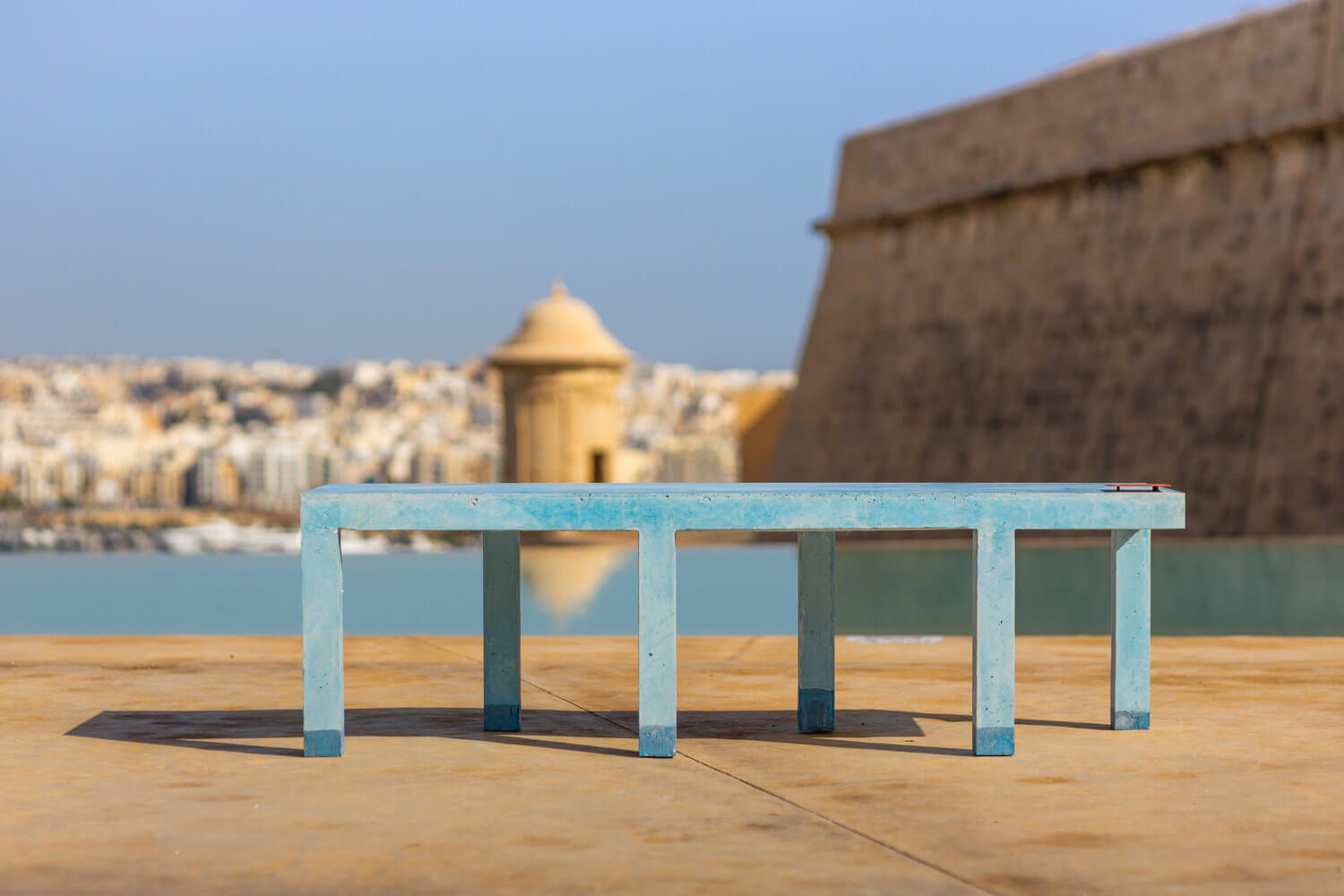
Anna Horvath, ‘Ta’ Rita’ bench, part of the SORĠI’ collection, 2021
COURTESY: Anna Horvath / PHOTOGRAPH: Therese Debono
A case in point is the Ta’ Rita Lapsi View Restaurant, on the south side of the island, which serves as inspiration for the Ta’ Rita bench. The designer stripped out all the windows and other architectural items, leaving only the bare bone structure of the building to serve as the basis of the bench’s design, and took inspiration from the blue colour of the restaurant for her piece. The ‘SORGI’ collection was funded by Malta Arts Project and has been selected to be part of ECO Solidarity’s online presentation at WantedDesign’s hybrid event CLOSE-UP, a joint venture with the International Contemporary Furniture Fair (ICFF) that took place last May.
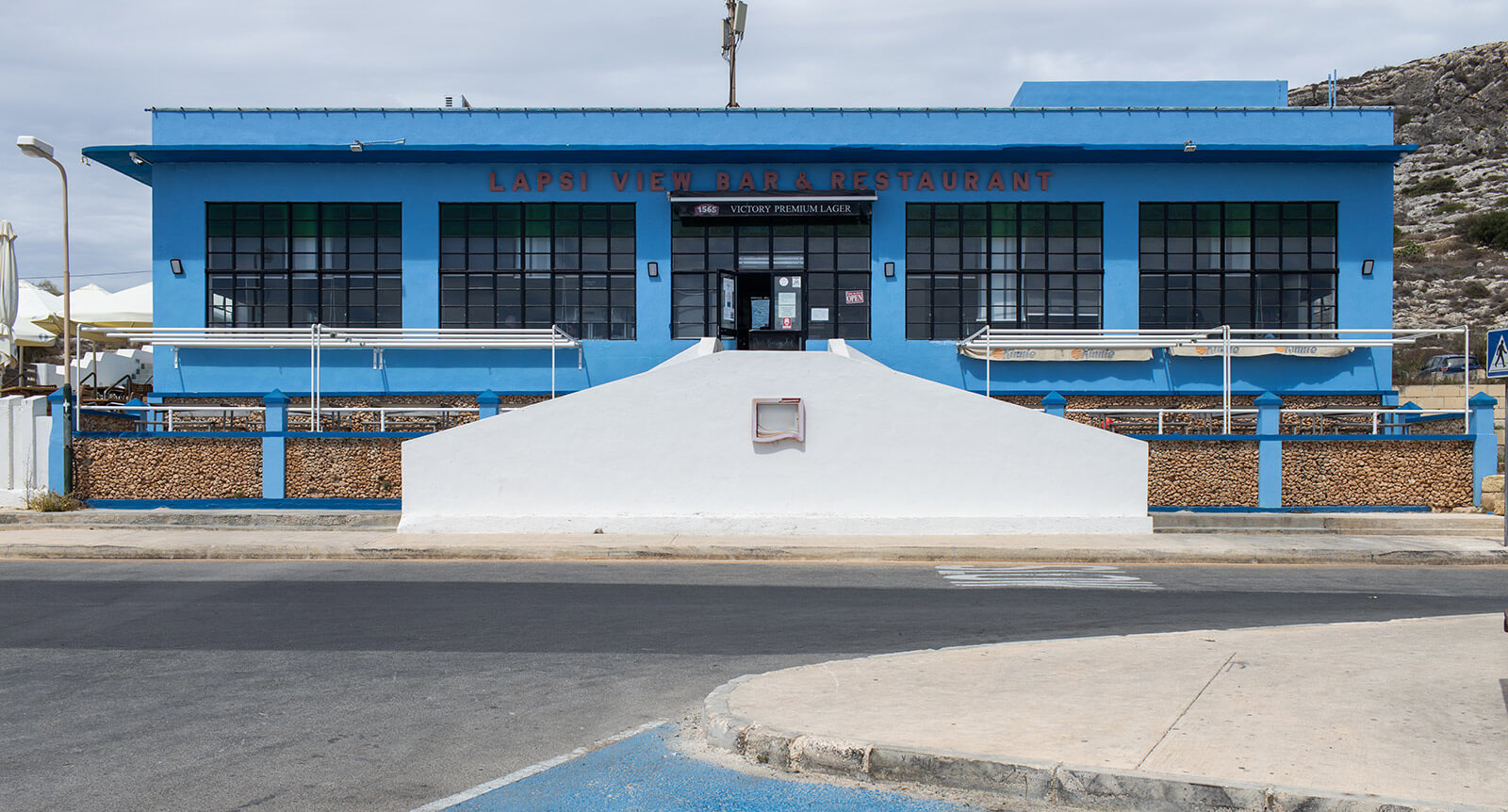
The Lapsi View Bar and Restaurant, publicly known as Ta’ Rita, 2020
COURTESY: Anna Horvath / PHOTOGRAPH: Therese Debono
Horváth’s creative training started in Hungary, aged 12, when she attended the weekend workshops of Gyula Gőbölyös and Aliz Laczkovich, an artist and collector couple who organised immersive training for those seeking to go into the creative field. She credits her time at their lakeside compound as a broad cultural awakening – something akin to a sort of cultural bootcamp, being exposed to art, art history, music, painting, sculpture, literature and design.
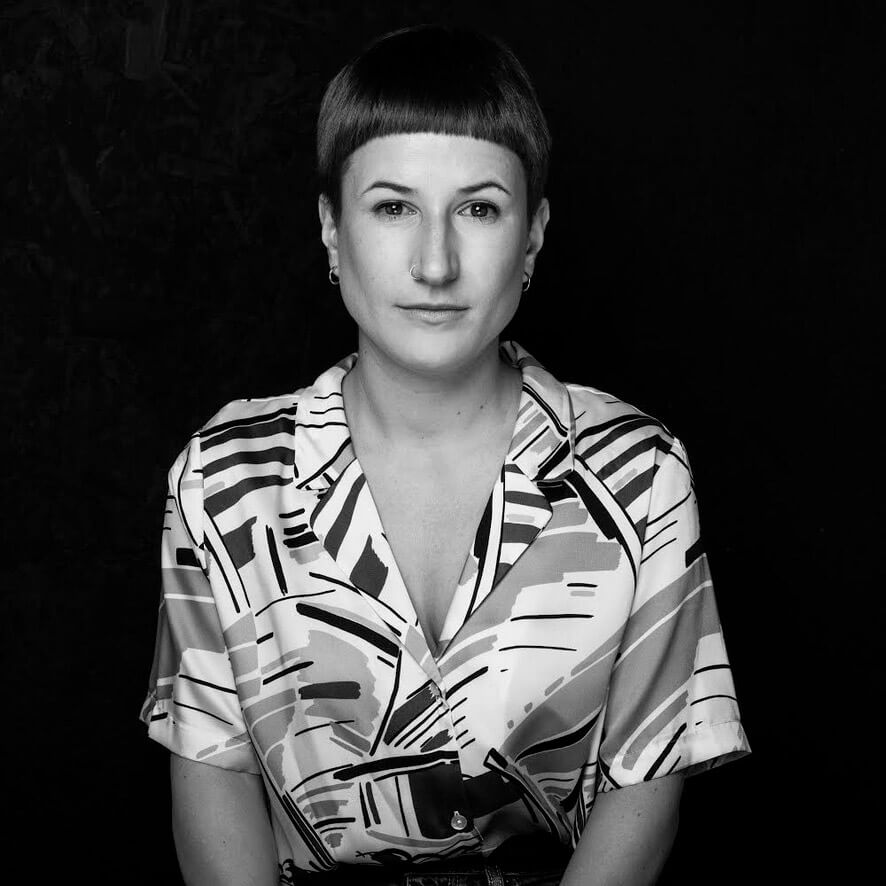
Anna Horvath
COURTESY: Anna Horvath / PHOTOGRAPH: Kris Micallef
From there she continued her education in Budapest, first attending a technical school, where she learned carpentry, followed by an architectural training at the Moholy-Nagy University of Art and Design.
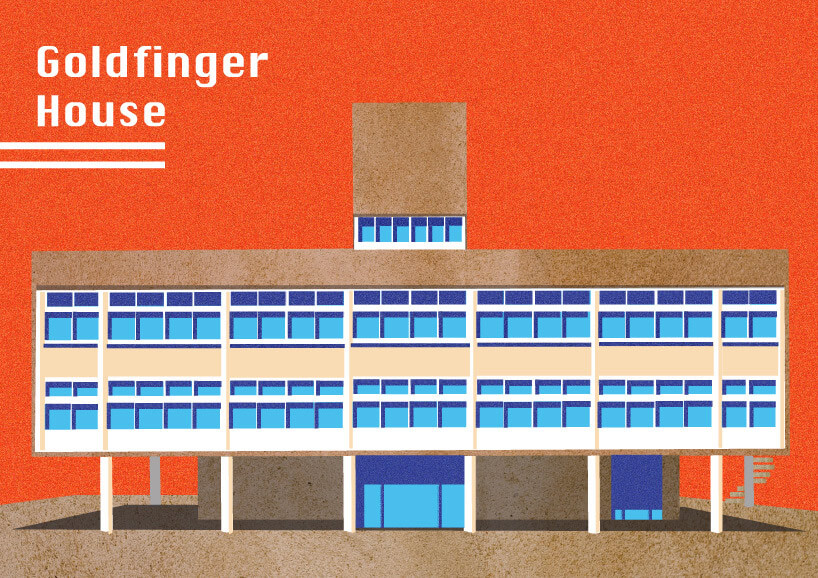
Anna Horvath, ‘Goldfinger House’, digital illustration from the ‘Goldfinger Series’, 2017
COURTESY: Anna Horvath
But as much as her technical knowledge was developing, Horváth missed exploring the more subjective side of design. That’s when she discovered the ‘Narrative Environments’ studio, part of the master’s program at London’s Central Saint Martins College of Art and Design. She saw it as an opportunity to merge her interests in both art and design. “When I read the course’s description – ‘Storytelling in 3 dimensions’ – I immediately thought that’s what I want to do, this what I need,” the designer recalls.
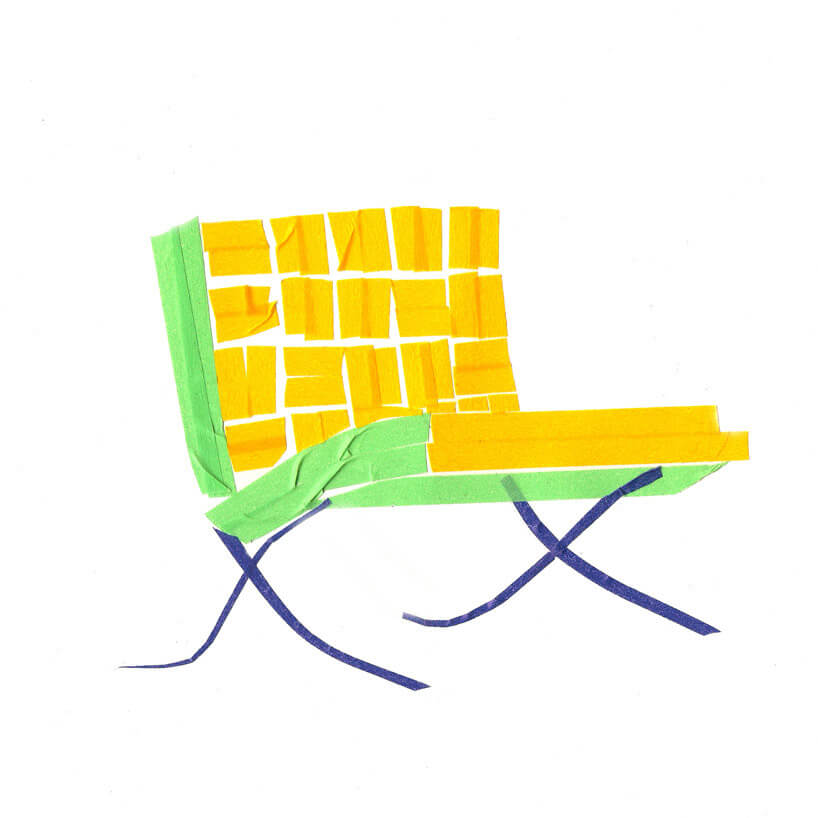
Anna Horvath, ‘Taped illustration series, nr 4.’, 2017
COURTESY: Anna Horvath / PHOTOGRAPH: Therese Debono
While at Central Saint Martins she had the opportunity to do several experimental projects, testing ideas and design directions. One was a group effort to design furniture for a music school at a favela in Rio de Janeiro. The project, a partnership between CSM and Rio’s Pontifical Catholic University (PUC) of Rio de Janeiro, helped to sow the seeds of a deeper awareness of the social possibilities of design to reach people in a significant way. “I think design has more to do than function. Design can have a social element, a political message, it can teach, inform people, and I find that important, that my pieces say something,” states Horváth.
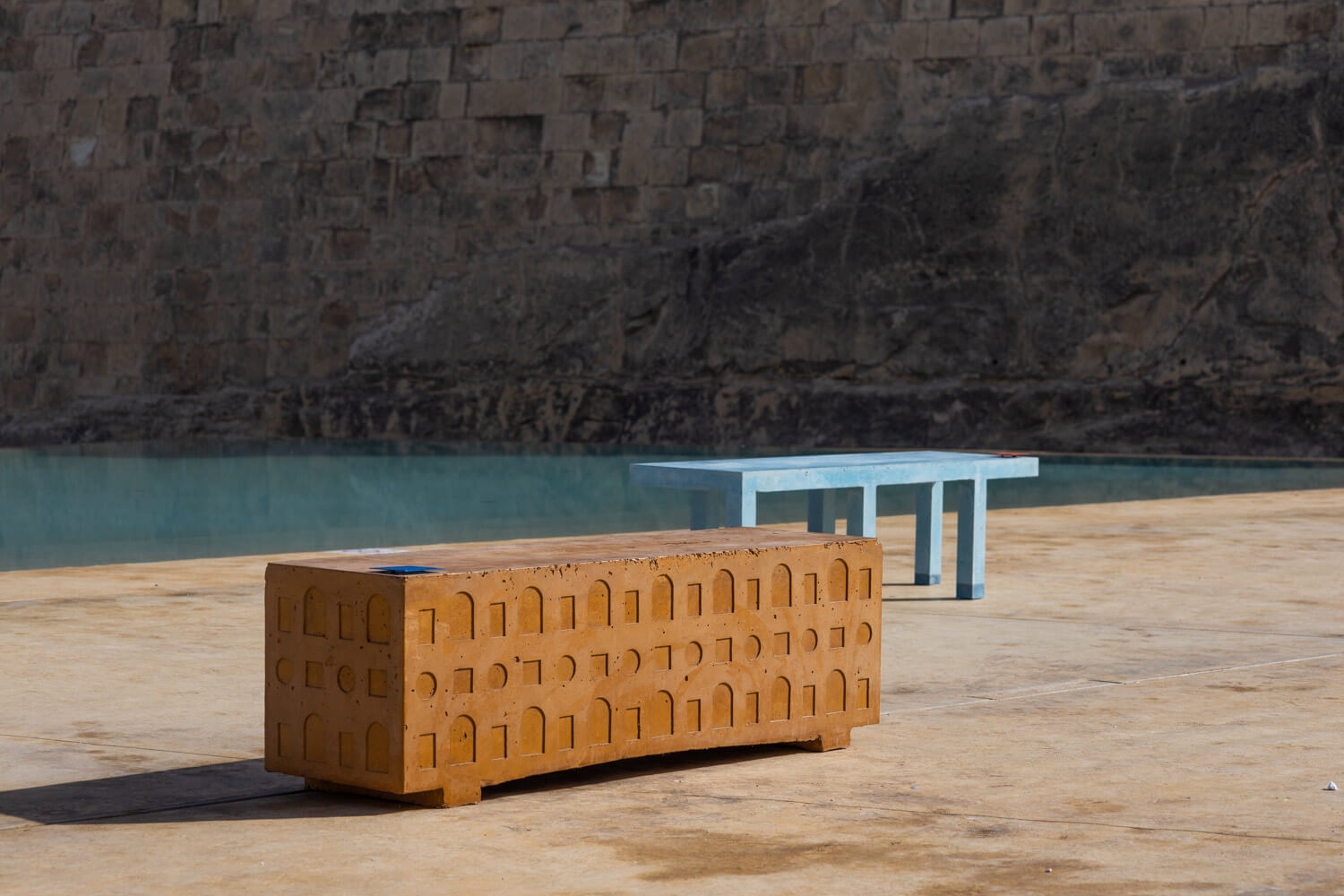
Anna Horvath, ‘SORĠI’ collection launch, 2021
COURTESY: Anna Horvath / PHOTOGRAPH: Therese Debono
For her ‘Collezione L!PUFF’ the lead message was the importance of sourcing locally. The design is an inspired take on Minimalism and Post-Modern design, with a hint of Memphis sensibility. Present are her bold geometric shapes and her bright red and cobalt blue signature colours.
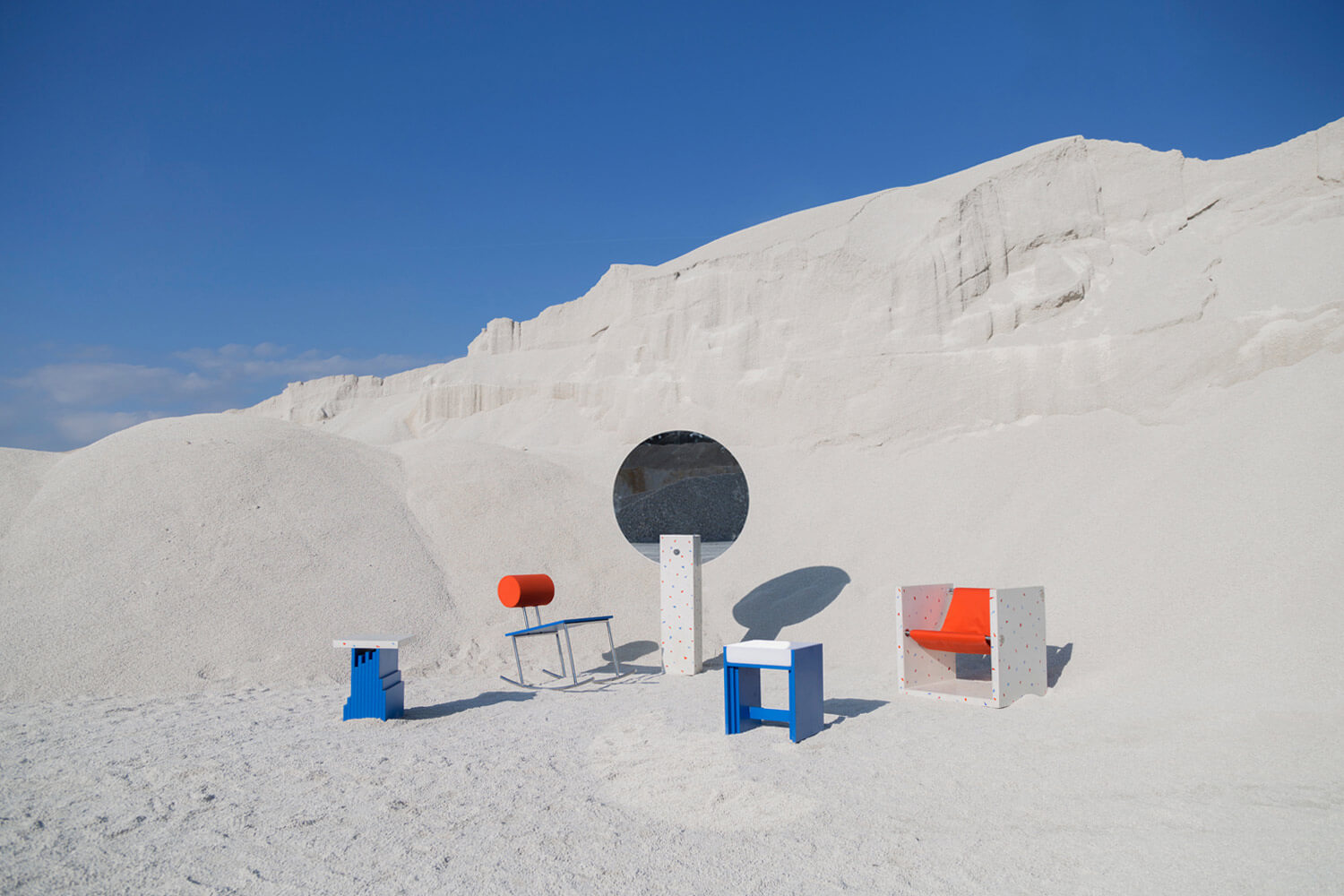
Anna Horvath, ‘Collezione L!PUFF‘, 2017
COURTESY: Anna Horvath / PHOTOGRAPH: Aliz Veronika Acs
Adding a contemporary touch to this design is the materiality of the pieces themselves, all of them built with the assistance of local craftspeople and using locally sourced materials. To highlight the relevance of the local even further, the collection was photographed at the same quarry where the cement for the pieces came from.
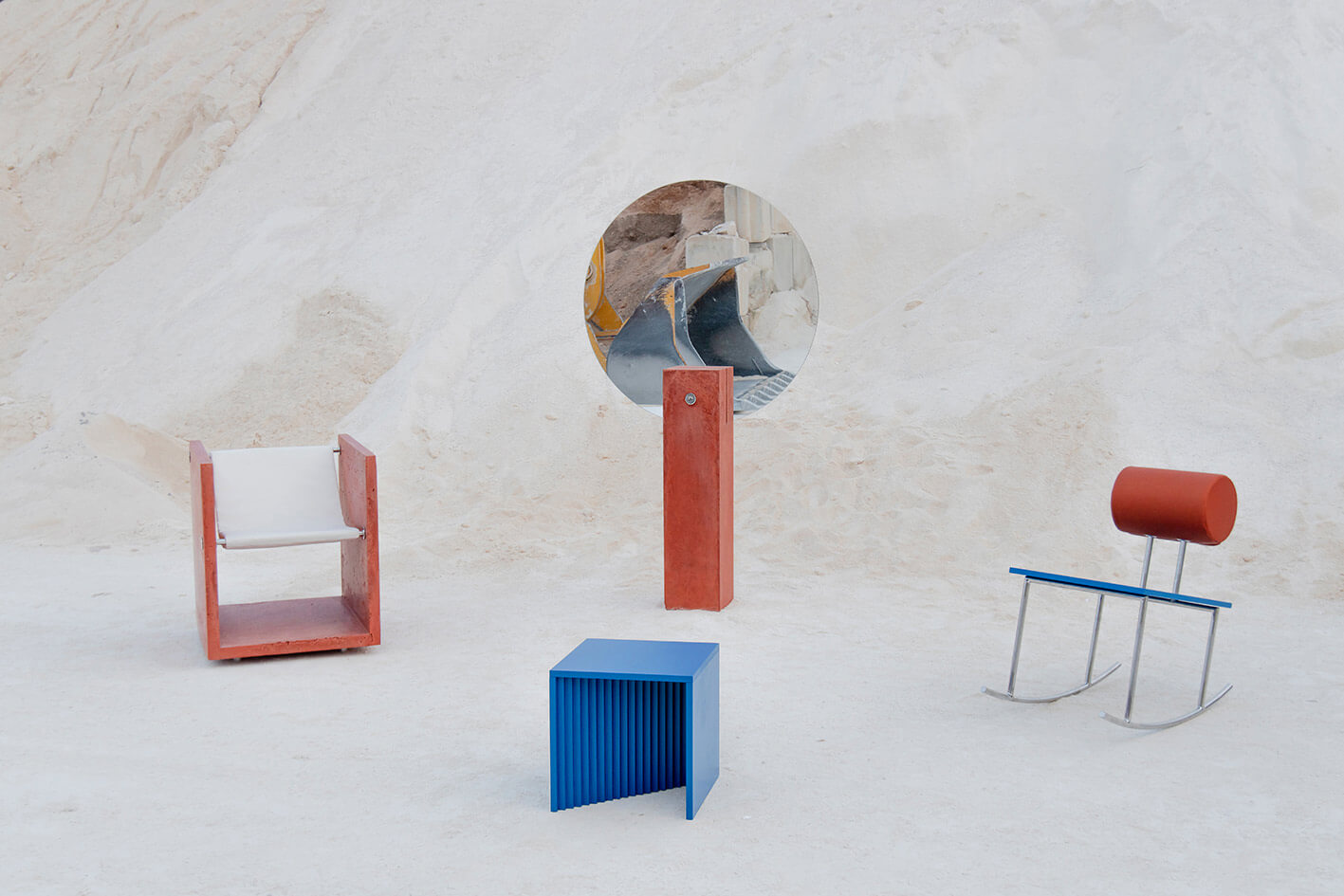
Anna Horvath, ‘Collezione L!PUFF‘, Edition 2, 2020
COURTESY: Anna Horvath / PHOTOGRAPH: Maria Galea
Her ‘Ziguzajg’ set design, by contrast, had a more lighthearted starting point, being commissioned by the Moveo Dance Company for the Ziguzajg Children’s Festival in 2020. Although the original motivation was playful, however, the living room design still features some of the basic elements of her aesthetic – minimal, primary shapes and colours, but with a twist. She says the design came spontaneously, through an intuitive rather than a conceptual process, contributing to its honest quality.
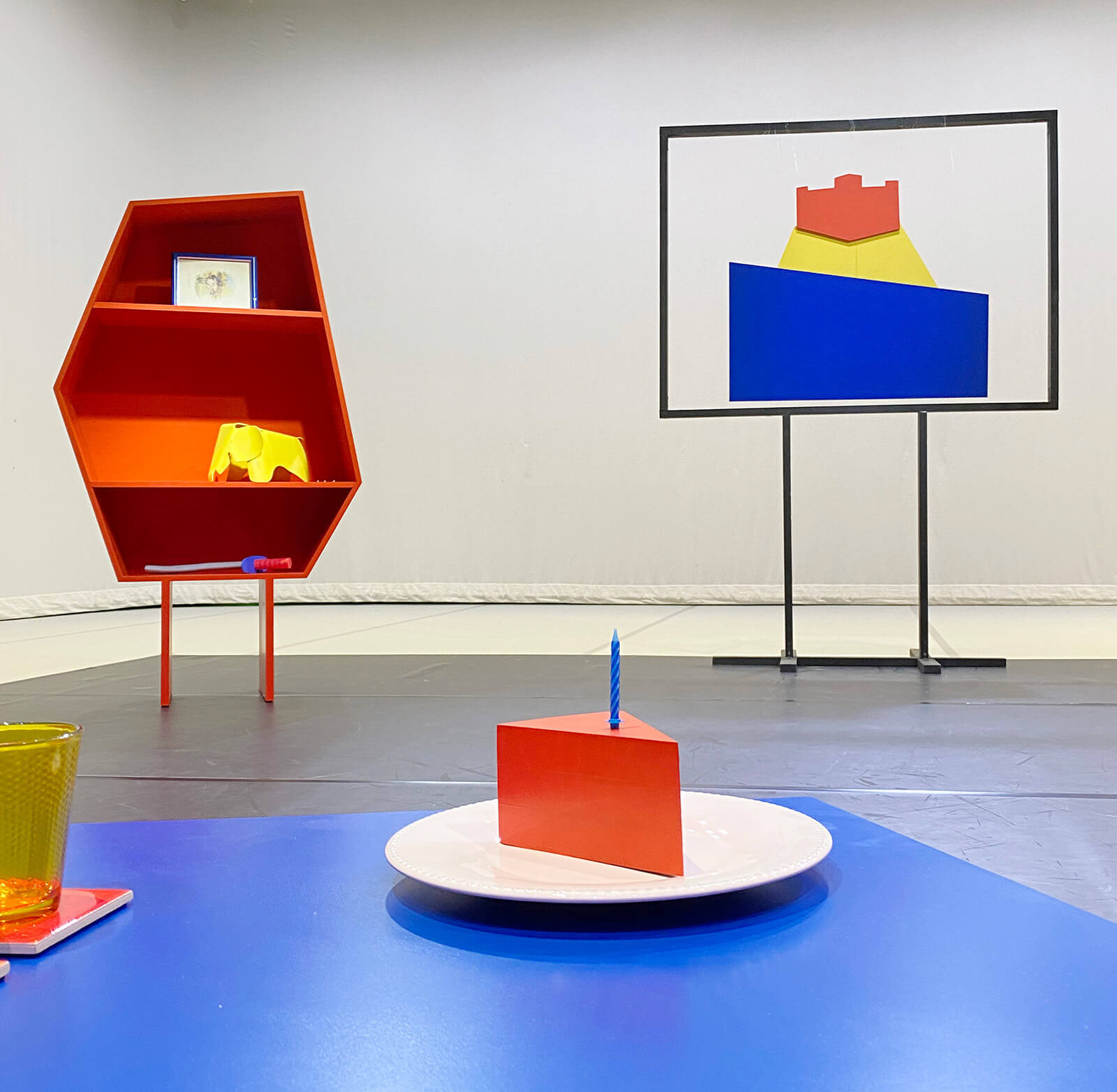
Ann Horvath, ‘Ziguzajg’ set design, 2020
COURTESY: Anna Horvath
Malta, the small archipelago country where Horváth has made her home, has clearly been a major influence on Horváth’s life and work. The strong primary colours of the Mediterranean – whether from the architecture, or from the myriad of bright fishing boats – feed straight into her colour-based inspirations. While she has pursued professional opportunities in London, Berlin, and Lisbon, the artist always returns to the colourful island, aware of the importance of balancing these engagements with a lifestyle of her choice. “It’s hard to explain, but there’s something about Malta that just really appeals to me,” Horváth explains, “And Malta has been very generous to me in many ways.”
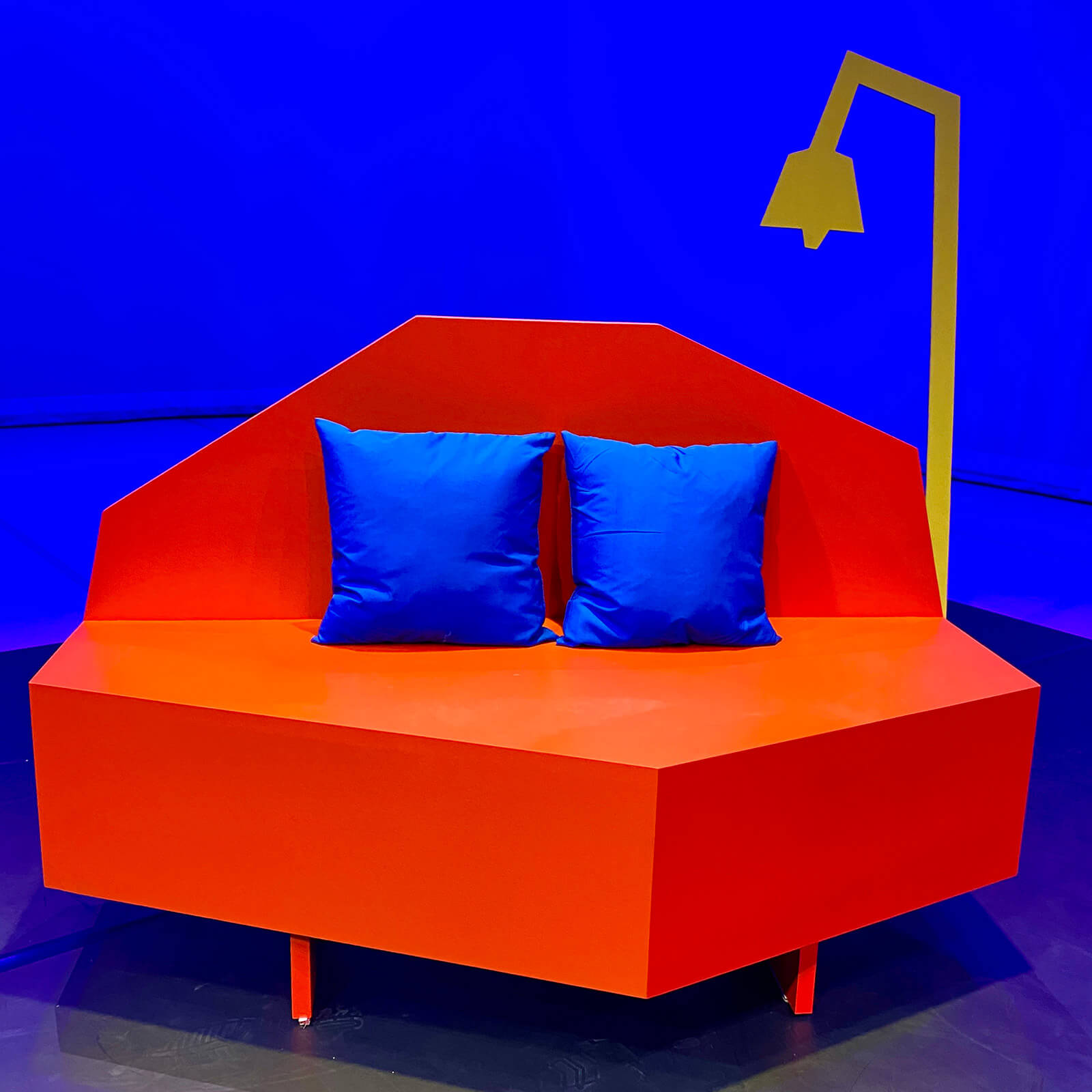
Ann Horvath, ‘Ziguzajg’ set design, 2020
COURTESY: Anna Horvath
